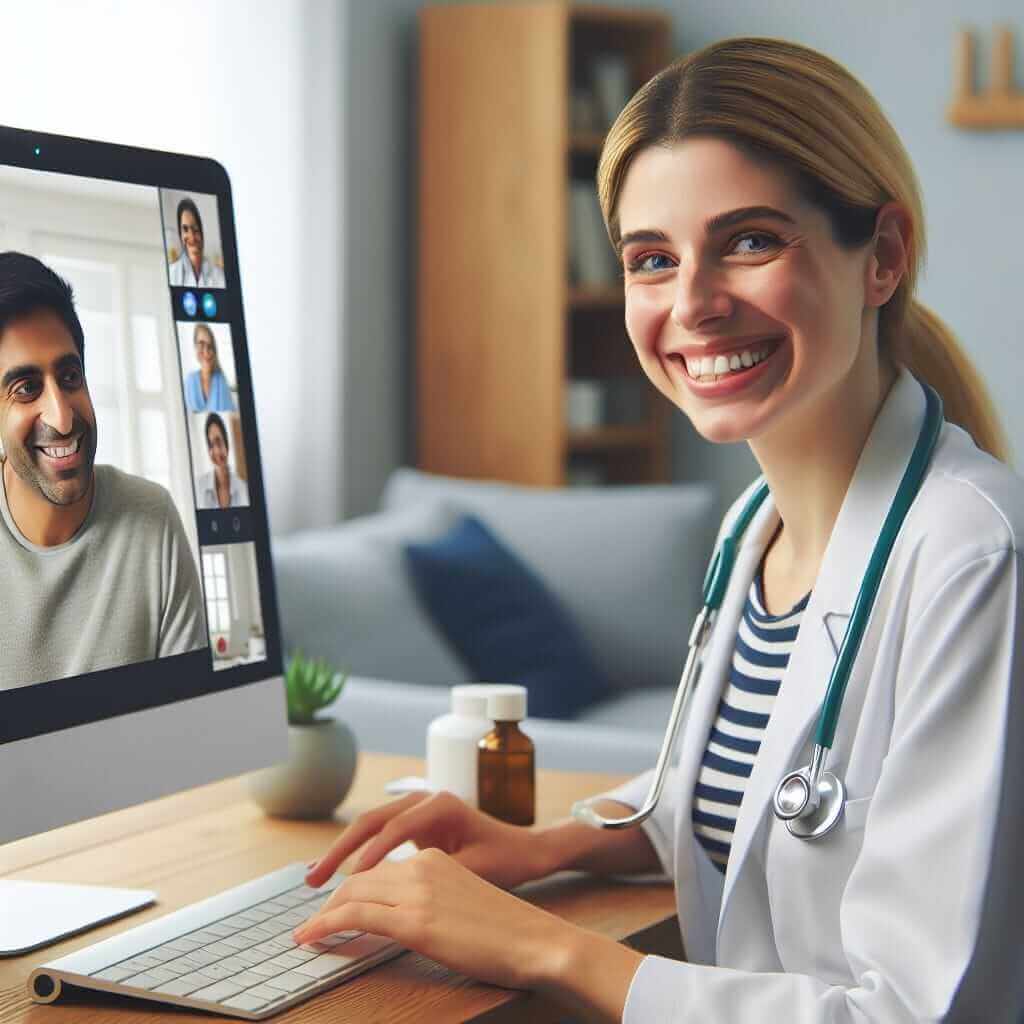The intersection of technology and healthcare is a hot topic in today’s rapidly evolving world, making it a frequent theme in IELTS Writing Task 2. This fusion of disciplines has led to groundbreaking innovations, revolutionizing how we approach health and wellness. This article delves into the influence of technology on healthcare innovation, providing insights into crafting a stellar IELTS essay on this pertinent subject.
Below are some potential IELTS Writing Task 2 questions related to this theme:
- To what extent do you agree or disagree that technology is the most crucial factor in driving healthcare innovation?
- Discuss the positive and negative impacts of technology on healthcare accessibility and affordability.
- Analyze the ethical implications of employing artificial intelligence and robotics in healthcare delivery.
Sample Essay: Technology and Healthcare Accessibility
Let’s elaborate on the second question listed above to illustrate a comprehensive essay response.
Question: Discuss the positive and negative impacts of technology on healthcare accessibility and affordability.
Analysis of the Question
This question requires a balanced discussion, analyzing both the advantages and disadvantages of technology’s role in making healthcare accessible and affordable. It’s crucial to provide concrete examples to support your arguments.
Model Essay:
Technological advancements have undeniably revolutionized numerous sectors globally, and healthcare is no exception. The integration of technology has brought about both positive and negative implications for the accessibility and affordability of healthcare services.
On the one hand, technology has significantly improved healthcare accessibility. The proliferation of telemedicine, for instance, has been instrumental in bridging the geographical gap between patients and healthcare providers. Through video conferencing and remote monitoring tools, individuals in underserved rural areas or those with mobility limitations can now consult with specialists across the globe, eliminating the need for expensive and time-consuming travel. Furthermore, mobile health applications have empowered individuals to actively manage their health conditions. From tracking fitness levels and medication schedules to accessing reliable medical information, these apps have placed healthcare control directly into the hands of users.
However, while technology holds immense potential to democratize healthcare, it also presents challenges. The high cost of developing and implementing sophisticated medical technologies can exacerbate existing healthcare disparities. Advanced imaging equipment, robotic surgical systems, and personalized medicine approaches, while groundbreaking, are often financially inaccessible to a large segment of the population, particularly in developing countries. This disparity raises concerns about equitable access to cutting-edge healthcare solutions.
Moreover, the rapid pace of technological advancements in healthcare necessitates continuous training and infrastructure upgrades, further adding to the overall cost. Healthcare professionals must constantly update their skills to keep pace with new technologies, which can strain healthcare budgets. Additionally, ensuring data privacy and security in an increasingly digital healthcare landscape remains a paramount concern, requiring robust cybersecurity measures that can be expensive to maintain.
In conclusion, technology has undoubtedly transformed healthcare accessibility and affordability, offering both opportunities and challenges. While its potential to bridge gaps and empower individuals is undeniable, addressing the affordability constraints and ensuring equitable access to technological advancements are crucial steps in harnessing its full potential for the benefit of all.
Word count: 324 words

Writing Tips
- Clear Structure: Follow a clear essay structure (introduction, body paragraphs, conclusion) to ensure a logical flow of ideas.
- Balanced Approach: Present a balanced view, discussing both the merits and drawbacks of technology’s impact on healthcare.
- Exemplification: Provide relevant examples to support your arguments, such as specific technologies and their applications in healthcare.
- Formal Language: Use formal and academic language, avoiding contractions and colloquialisms.
- Vocabulary Range: Demonstrate a wide range of vocabulary related to technology, healthcare, and societal impact.
Useful Vocabulary
- Telemedicine (n.) /ˌtɛlɪˈmɛdɪsɪn/: The remote diagnosis and treatment of patients using telecommunications technology.
- Accessibility (n.) /əkˌsɛsɪˈbɪlɪti/: The quality of being easy to obtain or use.
- Affordability (n.) /əˌfɔːrdəˈbɪlɪti/: The state of being affordable, or within one’s financial means.
- Disparities (n.) /dɪˈspærətiz/: A great difference.
- Equitable (adj.) /ˈɛkwɪtəbl/: Characterized by equity or fairness; just and right.
Conclusion
The influence of technology on healthcare innovation is a multi-faceted topic ripe for exploration in IELTS Writing Task 2. By following the tips outlined in this guide and familiarizing yourself with key vocabulary, you can confidently approach this essay topic and achieve a high band score. Remember to practice your writing skills regularly and stay informed about current trends in healthcare technology to strengthen your arguments.
For further practice, consider brainstorming ideas and writing essays on related themes, such as:
- The ethical considerations of artificial intelligence in healthcare.
- The impact of wearable technology on personal health monitoring.
- The role of big data analytics in improving healthcare outcomes.